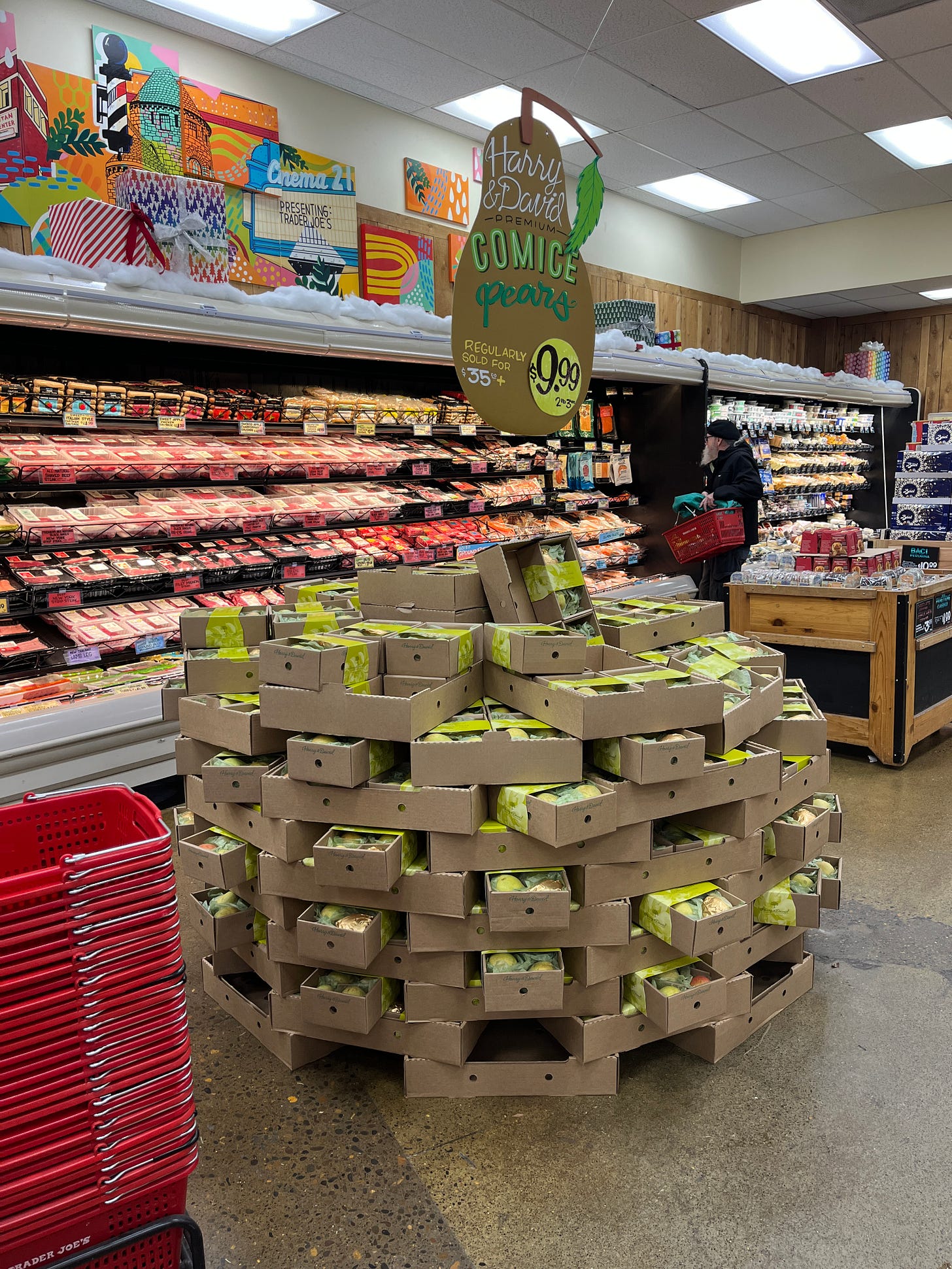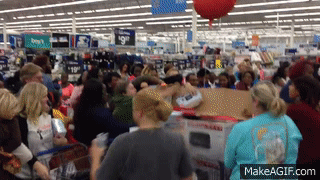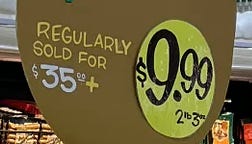Why the Harry & David’s Pear Display at Trader Joe's Could Do Better
How Perception, Packaging, and Pricing Impact How We Shop
When I saw this display at Trader Joe's, I shook my head.
Why would they put all the pears out at once like it was some kind of barnyard garage sale?
One reason could be that the store manager assumed we customers would think these pears weren’t going to be around forever. A study by Anderson and Simester (2003) examined how stock levels affect how people shop, and they found that higher inventory availability can actually increase sales, but primarily when customers expect stock-outs aka selling out of the product.
When I looked at this pear display display, I didn’t think these pears were going to fly off the shelves. I actually felt the opposite. With so many out on display, I started thinking there must be something wrong with them.
Cialdini (2001) explored how perceived scarcity influences decision-making. While the study focused on limited availability, it also delved into how abundance can impact how people shop.
In one experiment, participants were shown two jars of cookies—one nearly full, and the other with only a few cookies left.
Guess which jar was picked more often?
The one with the fewest cookies.
The jar with more cookies was left mostly untouched, which makes sense when you think about it. Nobody wants to eat the cookies nobody else is eating.
A better approach with the pear display would have been to limit the number of boxes they put out. It’s fine to have a lot in the back, but don’t let us see that.
This is the scarcity effect, and it’s a powerful tool to drive decision-making.
A lady who sells delicious desserts at a Portland Farmer's Market taught me this lesson. When I was deciding which dessert to get, I noticed the cheesecake tray had just two pieces left, even though it looked like it could hold many more.
You’re telling me not only did the cheesecake look exactly the way I liked it—fluffy, brown, and firm with that perfect cloudy texture—but there were only TWO pieces left? I’ll take them BOTH!
When she boxed them up, I couldn’t help but smile like I was a proud parent or something.
Yes, those two there, those are my cheesecake slices. They’re special because there’s only two of them here.
It wasn’t until the cashier handed me my bag that from the corner of my eye I saw her pull two more pieces of cheesecake from under the counter to replace the ones I just bought.
What a sneaky, brilliant entrepreneur.
She played me like a fiddle, and I don’t even blame her. The feeling of scoring the last exclusive dessert was genuinely special.
If she’d just perfected the routine by waiting until we left before restocking, it would have been flawless.
Now back to the display. I have two more points on how it could be better.
First, the cardboard boxes holding the pears make it look like I just left a U-pick farm, which isn’t the feeling you want when you’re paying more money pears wrapped in gold foil.
In their defense, maybe the pears were priced affordably because the boxes weren’t as polished as they are on the Harry & David website. But if you're positioning this as a special item, the box can’t look like it came from your local food shelter’s emergency pantry.
Lastly, the line on the sign that says “Regularly $35+” actually makes me feel like something’s wrong with the pears.
If these pears cost $35+ on Harry and David’s website right now but now sell for $9.99 here, again, the first thought I have is: What’s wrong with these?
I’d rather let the grocery shopper discover for themselves that the $9.99 price is something special, pulling from their own knowledge, just like this Reddit user did. (This is called the Socratic method of marketing.)
To recap:
Ensure the box that holds the pears is as high quality as the product itself.
Display 5-10 boxes on a smaller table.
Don’t mention how much they used to cost, let us figure that out for ourselves.
With these adjustments, I think the display would be … pear-fect.







